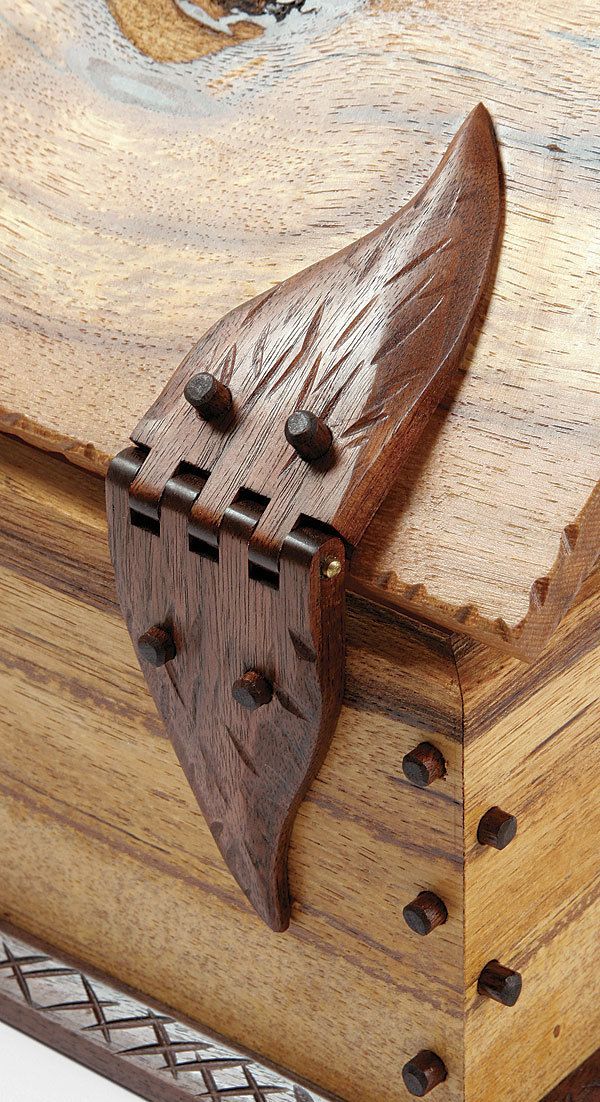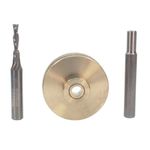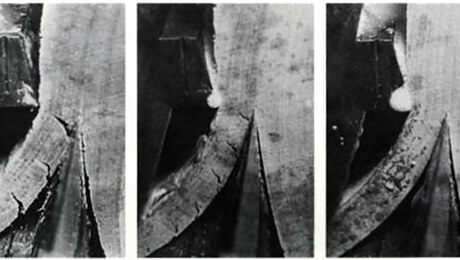
Synopsis: Ready to give up your dependence on the hardware store and mail-order catalog and unleash a little creativity? Try making your own hinges out of wood. Boxmaker Doug Stowe does it, and his technique isn’t difficult. One you master the mechanics, you’ll never be hampered by pedestrian hardware choices again.
Through the years, I’ve come to appreciate wooden hinges not only for their rustic beauty, but also because they are truly fun to make. They allow me occasionally to give up my dependence on the hardware store and mail-order catalog, to unhinge my creativity, and to say, “I made all of that, even the hinges.” And that’s a great feeling for a craftsman, new or old.
The technique I use to make wooden hinges isn’t difficult. The two leaves pivot on a knuckle joint and are held together by a brass rod. I’ll show you how to drill the hole for the rod and make the knuckles so that the hinge works smoothly. Once you have mastered the mechanics of the joint, you can have fun with the design.
Drill the hinge-pin hole
Before you drill the hole, there are two things to know about the hinge leaves. First, for strength, they should be no thinner than 3 ⁄8 in. Second, their overall width is directly related to the width of the knuckles. There needs to be an odd number of knuckles on each hinge. I’ve found that 1 ⁄4-in.-wide knuckles are a good size for most box hinges. That means the overall width of the leaves needs to be an odd multiple of 1 ⁄4 in. (11 ⁄4 in., for example). Mill your leaves to final thickness and width, but leave them a bit long. Also, mill some extra stock to the same dimensions to help with machinery setups.
I use 1⁄8-in.-dia. brass rod for the hinge pin. For a wooden hinge to work without binding, the holes for the pin must be straight and they must align with one another. To ensure accuracy, drill the hole before cutting the knuckles. Use a short brad-point bit, slightly longer than half of the hinge’s width, and drill in from both edges of the leaf. The short bit is less likely to wander than a longer one. You can find short drill bits at woodworking supply retailers.
Adjust the drill-press fence so that the bit is centered on the stock’s thickness (see photos, p. 81). Use a piece of extra leaf stock to set up the fence. Drill the hole in all of the leaves (four, if you are making a pair of hinges).
After drilling the holes, rout the knuckles to create the rounded shape they need for the hinge to open and close. If you were to do this after cutting the knuckles, you’d surely get tearout on every one. Put a backer block behind the leaf to guide it through the cut, keep it square to the fence, and prevent tearout.
For the full article, download the PDF below:
Fine Woodworking Recommended Products

Bahco 6-Inch Card Scraper

Whiteside 9500 Solid Brass Router Inlay Router Bit Set






















Log in or create an account to post a comment.
Sign up Log in